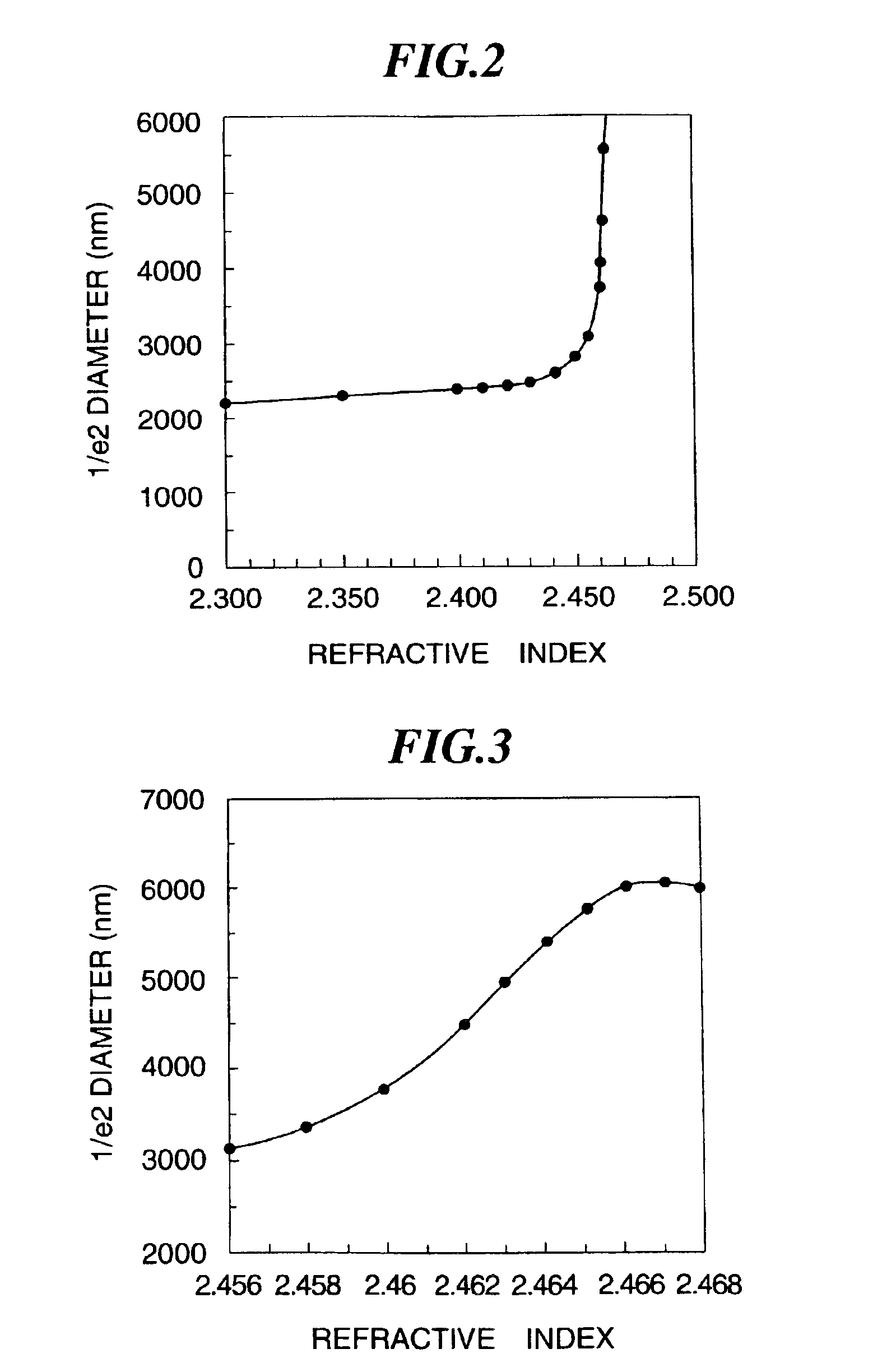Optical waveguide element, manufacturing method for optical waveguide element, optical deflecting element, and optical switching element
a manufacturing method and waveguide technology, applied in the direction of optical waveguide light guide, optical waveguide, optics, etc., can solve the problems of increased coupling loss with optical fiber, no fine pattern production technique available, and difficult to fabricate optical waveguide in flared shape, so as to reduce coupling loss and facilitate layer shape
- Summary
- Abstract
- Description
- Claims
- Application Information
AI Technical Summary
Benefits of technology
Problems solved by technology
Method used
Image
Examples
second embodiment
profiles illustrating the manufacturing process of the optical waveguide element, which is the invention;
[0033]FIG. 12 is a perspective view of the configuration of an optical switching element, which is a third embodiment of the invention;
[0034]FIG. 13 is a perspective view of the configuration of an optical deflection element, which is a fourth embodiment of the invention;
[0035]FIGS. 14A through 14D illustrates variations of the flare structure;
[0036]FIG. 15 is a perspective view of a variation of the optical waveguide element, which is the first embodiment of the invention; and
[0037]FIG. 16 is a perspective view of another variation of the optical waveguide element which is the first embodiment of the invention.
DETAILED DESCRIPTION OF THE PREFERRED EMBODIMENTS
[0038](First Embodiment)
[0039]The optical waveguide element, which is the first embodiment of the invention, will be described. As illustrated in FIGS. 1A and 1B, this optical waveguide element is provided with a buffer laye...
PUM
| Property | Measurement | Unit |
|---|---|---|
| width | aaaaa | aaaaa |
| mode field diameter | aaaaa | aaaaa |
| mode field diameter | aaaaa | aaaaa |
Abstract
Description
Claims
Application Information
 Login to View More
Login to View More - R&D
- Intellectual Property
- Life Sciences
- Materials
- Tech Scout
- Unparalleled Data Quality
- Higher Quality Content
- 60% Fewer Hallucinations
Browse by: Latest US Patents, China's latest patents, Technical Efficacy Thesaurus, Application Domain, Technology Topic, Popular Technical Reports.
© 2025 PatSnap. All rights reserved.Legal|Privacy policy|Modern Slavery Act Transparency Statement|Sitemap|About US| Contact US: help@patsnap.com



